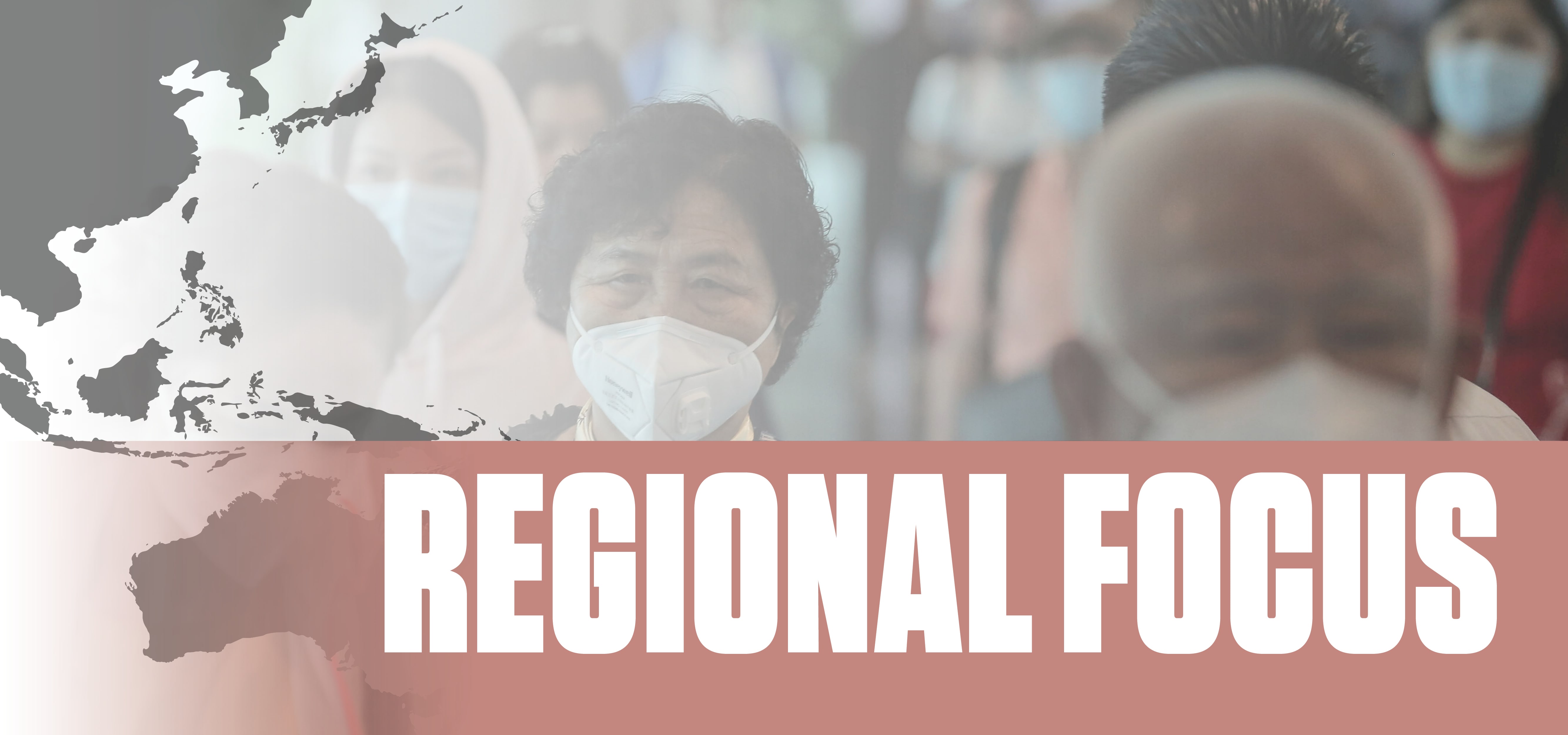
Six months since the initial outbreak of Covid-19 and the world of foodservice has changed dramatically. Countries across the APAC region have imposed a raft of different measures to try and combat the virus, from the severe lockdowns of China and New Zealand, to the relatively relaxed approach taken by Japan.
While restaurants have felt the financial and social impact of forced closures, almost universally crying out for relief packages to support them through the crisis, the measures have proved successful in flattening the curve.
As the number of cases drops off, countries such as New Zealand and Australia have lifted restrictions on foodservice, allowing restaurants and cafes to reopen.
Meanwhile, South Korea and some provinces in north east China have re-imposed lockdown restrictions, following a spike in cases. This will undoubtedly be a blow to those foodservice establishments that reopened and were readjusting to the new normal, but highlights the importance of appropriate social distancing in foodservice.
Slow progress
Restaurants began to reopen in China in March, just three months after the first case of coronavirus was reported in Wuhan. Large fast casual chains, such as McDonald’s were among the first to reopen, having more resource to implement the necessary social distancing measures. But business has far from recovered. Domino’s has reported that its stores are currently operating at 30% of its pre-Covid business, indicating that there is still a long way to go.
New Zealand has demonstrated one of the most effective responses to coronavirus across the globe. By enforcing lockdown immediately and making effective use of contact tracing, the country has limited the number of confirmed and probable cases to 1,504, with just 22 deaths. As such, it was able to enter level 2 (phase three of its four phased approach), in May, which saw the reopening of cafes and restaurants for up to 100 people.
Japan lifted its state of emergency on 14 May. Without the legal power to enforce a lockdown, leaders instead encouraged people to avoid closed spaces, crowded places and close-contact settings. While some businesses were requested to close, many cafes and restaurants were among those to remain open under reduced operating hours or for take-away services. They are now being urged to welcome dine-in guests and extend their opening hours to 10pm.
As of 1 June, restaurants in Australia are able to open for between 20 and 100 guests, with guidelines varying by state. Consultant Steve Sidd FCSI, managing director of Catering HQ in New South Wales, Australia, is excited to not only be reopening five venues, but launching a further two.
“While I’m cautious and conservative about opening and all the preparations were making, I’m also quite optimistic about it because people can’t wait to get out again,” says Sidd, who has had to stop taking bookings due to the high volumes of calls. “Not only are the customers excited about coming back but so are the staff.”
India’s restaurants, however, are still shut for dine-in guests, though many In Delhi and Mumbai are offering home delivery. The sad reality is that estimates suggest one in every four restaurants in the country may never reopen. With more than 7 million people employed in the industry and a similar number engaged in ancillary activities, this is a significant blow to the country’s overall economy.
“A modest 30% job loss could mean over 2 million people directly employed in the sector being rendered jobless,” says Anurag Katria, president of the National Restaurant Association of India. “This may lead to larger societal problems.”
Drastic measures
As restaurants reopen, all are having to introduce new ways of working to ensure the safety of guests and staff – from hand sanitising stations and tables two meters apart to personal protective equipment (PPE) and face masks. While these social distancing measures may go some way to put people at ease, they also highlight the danger and may deter guests from returning.
Operators in Shanghai, China, have seen a dip in their lunch trade, with workers instead choosing to bring lunch from home, and those in Hong Kong are closing earlier as fewer people stay out to socialise.
“Hong Kong has relaxed its rules from maximum four customers per table to eight per table. Restaurants have reduced their sitting capacity to a third, and customers have their temperatures taken before entering the restaurant,” says consultant Clara Pi FFCSI, director of FCG, based in Hong Kong.
Delivery, meanwhile, is still a popular option. Estimates suggest demand for home delivery and pickup in China quadrupled during the early stages of the pandemic, with an increase in users of 25%, according to Statista.
Due to the restrictions on physical premises, Brandon Kua FCSI, director of Citrus Consult in Malaysia, thinks there may be a shift in the way foodservice businesses are modelled, with delivery and cloud kitchens (also known as dark or ghost kitchens) becoming more popular.
“Having a central kitchen will be interesting for many businesses because it will take away the initial start-up costs that you need to have to find a place, pay rent and buy equipment,” he says.
With cloud kitchens, all businesses need to is sign up for a nominal fee, register online, make their product available on delivery apps and then start cooking. “The equipment is often available for you from the kitchen itself, or there may be some business models where a cloud kitchen gets you a space and all you need is to invest in the equipment you need to operate.”
However, while Catering HQ had success with delivery during the stricter lockdown, Sidd is confident that demand for dine-in will increase. With guests eager to return, he has introduced floor decals and barricades to aid the flow of guests throughout his restaurants and will be taking both temperature checks and customer details at the door, so that they can be easily contacted if there is an outbreak.
“It’s a very different environment,” he says. “Obviously, we have a lot of restrictions with the amount of seating we can have; we’ve removed communal cutlery and sauce stations; cutlery is being served in little pocket sleeved napkins when customers order rather than having pre-set tables; staff on the floor are wearing gloves and changing those on a frequent basis.”
The company is also promoting contactless payment wherever possible, something that is likely to become standard across many restaurants.
The novelty factor
In Thailand, restaurants have been open since early May. One restaurant in Bangkok has taken special measures to ensure diners don’t feel anxious or lonely, by sitting them next to stuffed pandas, while another has created bright green cardboard dragons to keep them company. This has the added bonus of indicating where guests can and can’t sit, which has helped make social distancing easier to implement. For those craving physical interaction, the city’s cat café is also back up and running, providing guests with some much-needed animal therapy.
In New Zealand, one Auckland restaurant has introduced mannequins to fill the empty seats, staging them in couples and groups as if they were his average guests. While in Sydney, Australia, another restaurant has produced cardboard cutouts and plays the hubbub of a normal restaurant over the speakers, so guests don’t feel as conspicuous.
Sidd is taking a gentler approach to creating the right ambience for diners: “Because the space is so empty, we’re moving in plant boxes and things like that create an atmosphere – we tend towards more natural stylings. Our al fresco dining areas will have tea lights and candles, to help make it feel warm and comfortable.”
The new normal
Much is still uncertain, as foodservice businesses across the APAC region strive to adapt and create a new normal while bracing themselves for further outbreaks.
Kua believes this change in approach to dining is here to stay, at least until a vaccine is produced that can truly give people the confidence to go out normally again.
“At the same time, I think it has also given us an opportunity to reflect on how we do life together and I see that the community will become stronger,” he says. “We’re actually trying to support each other to make sure we can pull through this together and I’m positive that if we can get through this pandemic and economy crisis this year, then next year will be better.”
Liz Cooley




